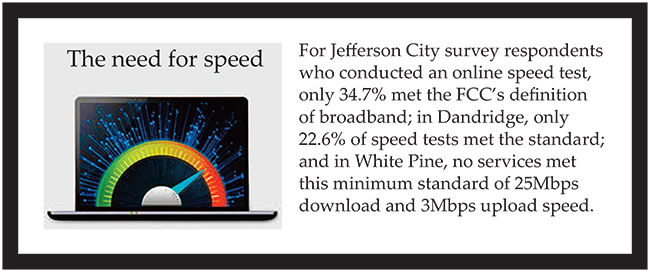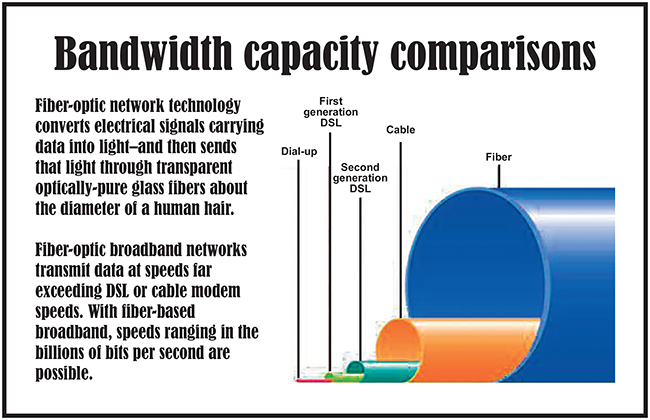Broadband Feasibility Study Completed
Allows Partners to Make Informed Decisions when Considering Fiber Network
 Residential and commercial members have provided input; now the evaluation process begins.
Residential and commercial members have provided input; now the evaluation process begins.
A couple of area utilities and several municipalities have joined together to carefully consider the viability of delivering gigabit Internet connectivity via a fiber-optic network to homes and businesses in parts of Jefferson and Hamblen counties. Acting in a shared-cost partnership effort, Appalachian Electric Cooperative (AEC), Morristown Utility System (MUS), and the cities of White Pine, Dandridge, and Jefferson City commissioned a comprehensive Broadband Feasibility Study. The partners contracted with Denver-based consulting firm Magellan Advisors to determine both the need for and the advisability of proceeding with such a plan.
AEC General Manager Greg Williams notes that AEC’s priority is on expanding the use of fiber, first and foremost, for the efficient and reliable operation of the electric grid. “We are certainly willing to look at this idea very carefully,” he says, “but only through the perspective of promoting the best interests of those we serve. One of the seven principles that we ascribe to as a Cooperative is ‘concern for community.’ If we can leverage our investment in fiber to provide additional return on that investment and bring value to our members in terms of broadband connectivity while protecting them from undue risk, that’s something we would want to consider.”
The Study provides a clear picture of the current state of connectivity within the portion of AEC’s service area that lies within Jefferson and Hamblen counties. It addresses availability, adoption (or impediments to adoption), preferences, and use of various types of Internet services by residential and commercial members. It identifies locations that have been found to be underserved by retail Internet service providers and establishes the degree to which lack of infrastructure, inadequate service levels, and high cost limits Internet access and use by households and businesses. The Study also estimates the potential costs to implement this plan would likely be in the range of $80 million.
The idea of delivering fiber-based broadband service will continue to be explored in the coming months, with both utilities and each city determining whether or not to explore potential business models and options by which the project could be funded—either publicly, privately, or through a combination of the two. Final approval would eventually require votes by the governing Boards of Directors and City Councils.
For more information on the Feasibility Study, visit aecoop.org.












